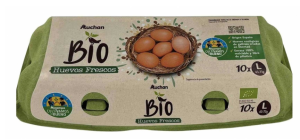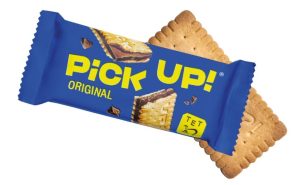Packaging Design Affects Marketing and Branding: Why and How?
2024-02-09
Marketing thrives on creativity and innovation, essential elements for standing out in a crowded marketplace. Researchers have extensively explored the influence of packaging on consumer purchasing decisions, revealing its often underestimated significance, particularly in the realm of consumer packaged goods (CPGs). This article delves into the pivotal role that packaging plays in a successful brand marketing strategy.

Packaging as the Initial Point of Contact
Packaging acts as the primary medium for conveying information about brands, creating an image for both the product and the producing company. A study by Andrew Wilson Appel, a professor at the University of Princeton in 2022, highlighted that 80% of purchasing decisions are essentially made when consumers are captivated by the packaging design while passing through store shelves.

Packaging Communicates Brand Identity and Philosophy
The design of packaging serves as the interface between the brand manufacturer and the consumer. Well-crafted packaging communicates a brand’s values through its visual aesthetics and materials. For instance, a commitment to sustainability may be reflected in eco-friendly packaging choices, such as the shift by companies like Coca-Cola to replace plastic shrink wrapping with cardboard can carriers.

A luxury brand, aiming for exclusivity and sophistication, may opt for elegant and high-quality packaging, like overwrapping. Aligning packaging with core values enables brands to attract consumers who share similar ideals, fostering a connection that influences purchasing decisions.
Choosing the Right Packaging Form for Budget Optimization
The selection of appropriate packaging forms is crucial for enhancing packaging line efficiency and throughput. While unique and customized packaging may attract consumer attention positively, it can have downsides in terms of increased setup time, equipment costs, reduced production speed, material waste, and limited equipment compatibility. Simplifying packaging shapes and styles can contribute to a more streamlined and cost-effective production process.

Targeting the Right Audience with Packaging
Packaging functions as a potent tool for businesses to establish a connection with their customers. Beyond protection and containment, effective packaging design must consider aesthetics that resonate with the target audience. Visual appeal influences consumer behavior, with designs tailored to the preferences of the audience in terms of color, typography, and imagery.
Practical aspects, such as convenience and usability, are crucial for addressing the specific needs of the consumer. For instance, targeting busy parents may prioritize user-friendly and convenient packaging, while tech-savvy consumers might appreciate interactive elements like QR codes or augmented reality.
Packaging and Marketing Strategy Integration
Packaging and marketing strategy are intertwined, with packaging playing a pivotal role in shaping product perception and consumer behavior. It serves as a potent tool to attract attention, differentiate from competitors, and communicate the value proposition of a product. Effective packaging aligns with the overall marketing strategy, reflecting brand identity, conveying product information, and creating emotional connections. Incorporating elements such as color, typography, imagery, and materials allows packaging to evoke desired emotions and associations, influencing purchasing decisions and fostering brand loyalty. Businesses aiming for a cohesive and impactful brand experience must integrate packaging considerations into their marketing strategy.




